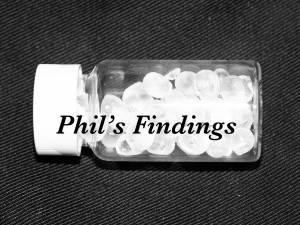Phil’s Findings #6: Multisensory Design
27 June 2011

Phil Howes, the Institute of Making’s post-doc researcher, shares his thoughts and findings as he delves into the sensoaesthetic world of materials. Check this space every Monday for Phil's latest posting.
Last time I talked about the grand plan behind our work in sensoaesthetics, and how we would like to nurture a more collaborative relationship between materials science and art and design. What I provided was a general description, but I didn’t describe any applications. So what about it? Where can we go with this work?
Well, a prime example is a field known as ‘tactile branding’. In product design, a huge amount of consideration and effort is put into how a product and its packaging look. As you walk around the shop, your primary means of search is by vision. If you see something which catches your eye, and you like the look of, you’re probably more likely to buy it. And in a crowded market place for many products, this means of attracting attention is paramount. However, an often unexploited avenue of sensory attraction in product design is the sense of touch. If you see a product you like the look of, you may pick it up off the shelf, but the battle for your affection is only half won; you still need to put it in your basket. By manipulating the feel of a product in the hands of the consumer, it is hoped that the sense of touch can evoke positive feelings and result in a sale.
There is increasing interest in tactile branding and tactile marketing. Many big businesses, marketers and product designers are attempting to take a more considered approach to the role of touch in consumer behaviour, and developments in manufacturing technology are playing a big part in this process. For example, the development of inexpensive coating technologies is allowing designers to play with the surface properties of a material. A famous bread manufacturer recently developed a ‘soft feel’ lacquer coating for the packaging of its crustless bread in order to make the product’s feel commensurate with the perceived softness of the bread within. You can imagine the product experience may be underwhelming if it was packaged in a shiny and cheap looking plastic film.
However, the shape and surface feel is not the only thing a designer can play with. A whole ethos of ‘multisensory product design’ is developing which aims to stimulate all the senses of a consumer. This idea is being studied from a variety of viewpoints, including cognitive neuroscience, psychology, marketing and materials science. It is anticipated that an increased understanding of people’s interactions with materials will lead to better product design, and to more exciting product interactions. As the aim of our research at the Institute of Making is to use the fundamental physical properties of materials as predictors of their sensoaesthetic properties, we hope that our work will feed directly into the design and manufacture of exciting and innovative new products.